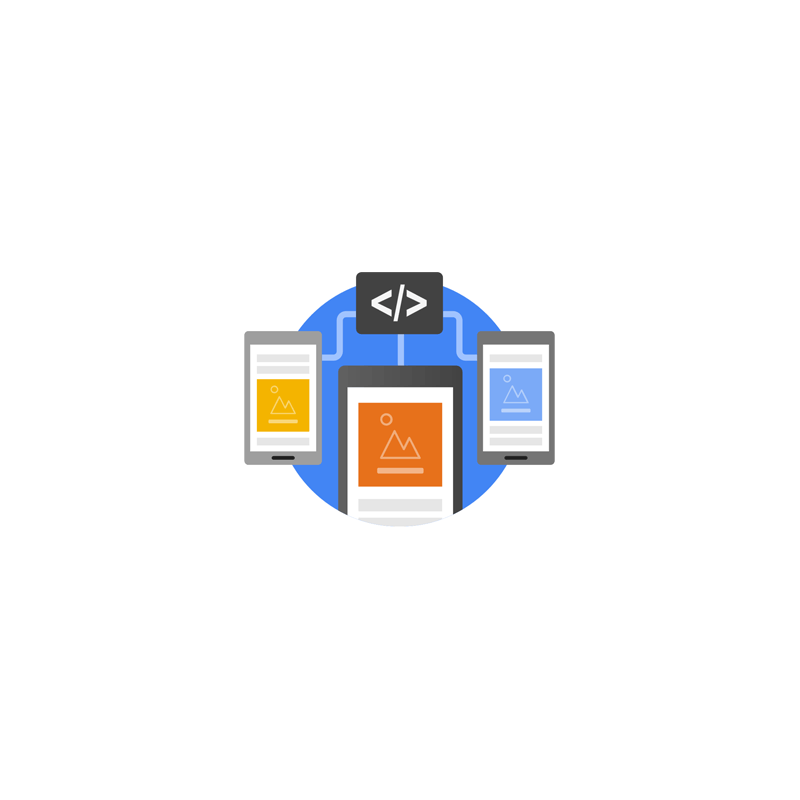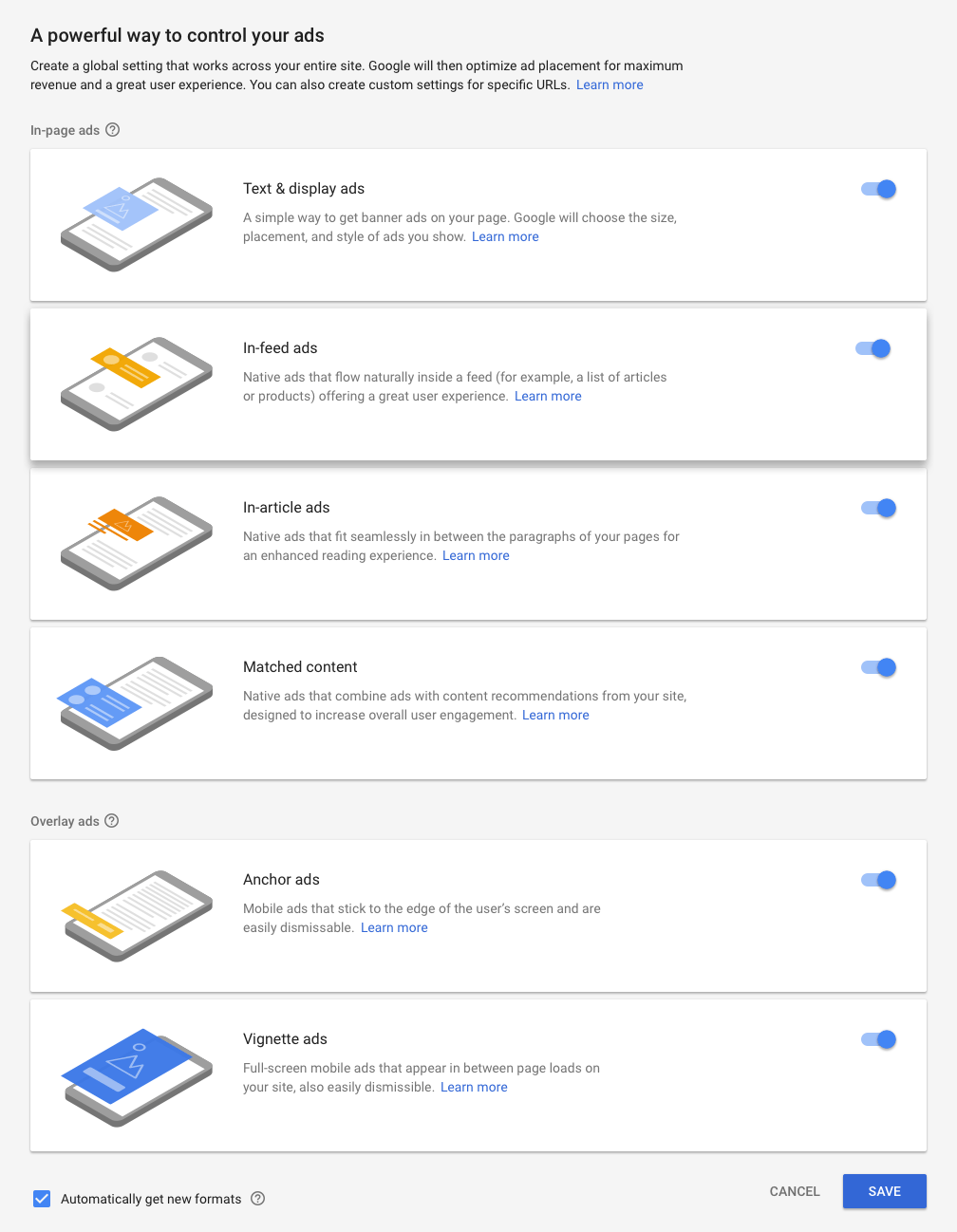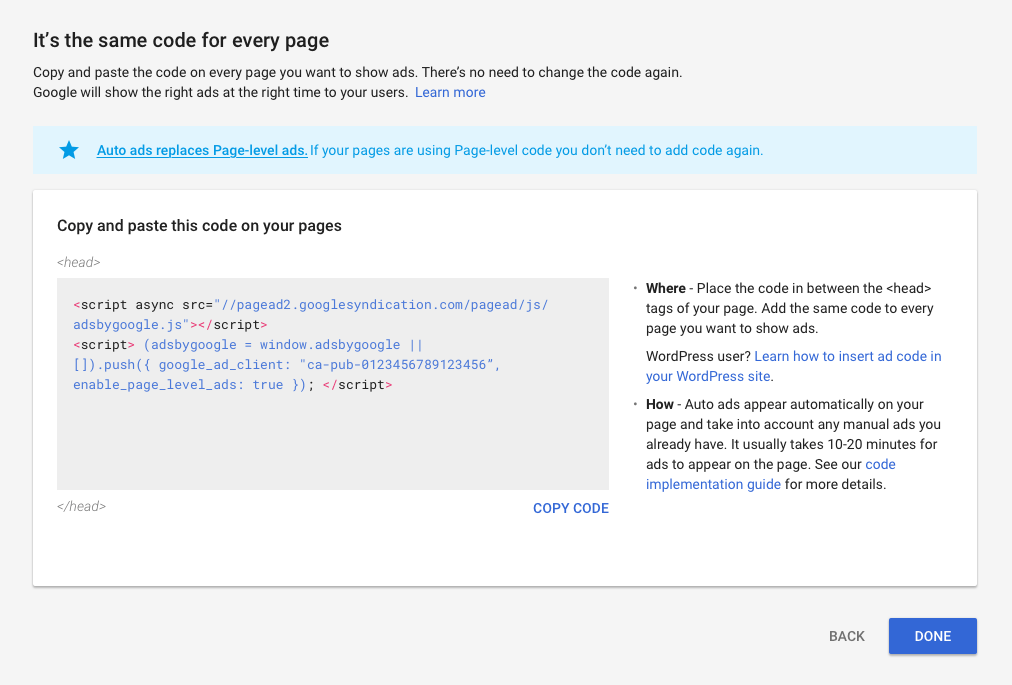
Google is making a big push on AdSense by announcing a new ad unit that taps into the company's AI.
The ad unit is called 'Auto Ads'. What it does, is bringing more potential revenue for publishers who may want to ramp up their advertising efforts but don’t have the time or other resources to manage them.
It uses machine learning to read a page, and to detect and place what kinds of ads might be appropriate to place there, including its placements and the number of ads to run. Here, publishers can activate Auto Ads using a single line of code on the page.
To do this, publishers need to sign in into their AdSense account; go to the global settings from 'My ads'; copy the code that is there, and pasting it between the header tags for every page where they you want the ads to appear.
"Place one piece of code just once to all of your pages and let Google take care of the rest," said Google announcing Auto Ads.
Publishers won't need to remove any of their existing, manually-placed ads to use it; Auto ads won't interfere with those, Google continued.
In short, Auto Ads uses machine learning to improve results and find unused ad space where new ads can go.

The service was first launched quietly in a limited beta on September 2017. At that time, Google said that "publishers participating in the beta saw an average revenue lift of 10 percent with revenue increases ranging from five to 15 percent."
Publishers who have used AdSense before, know that Google puts a bit of automation here and there. However, used by tens of millions of publishers around the globe, publishers need to indicate where they want ads to be placed, and the number of ads they want.
Google then crawl the page to figure out which ad in its inventory is the most relevant, and show that ad on the page.
With Auto Ads, Google is putting more automation to AdSense. The AI's task is to select the placement, and do all the work for publishers that previously need manual intervention. And using machine learning, Google can teach its system to place better ads in the future.

In a blog post from AdSense engineering manager Tom Long and product manager Violetta Kalathaki, the two noted that the unit includes a mix of normal ads, Text and display, In-feed, and Matched content ads, as well as Anchor and Vignette ads.
And for those who have been using Page-level ads (specifying different kinds of ads depending on the subject of a page, rather than a whole site), Google automatically migrates their code to run with Auto Ads. And for those who are using Google’s AMP service for mobile pages, they have to use code for AMP Auto ads.
However, using Auto Ads means that publishers are willing to allow Google to decide what's best for them. This is something that publishers would have more control without it.
While Google said that publishers experienced increased revenue, many webmasters detailed that some early beta testers were not pleased about how many ads ended up on their pages, and what the ad did to user experience on the site.
But here, Auto Ads are meant to only give convenience to publishers by automating tasks.